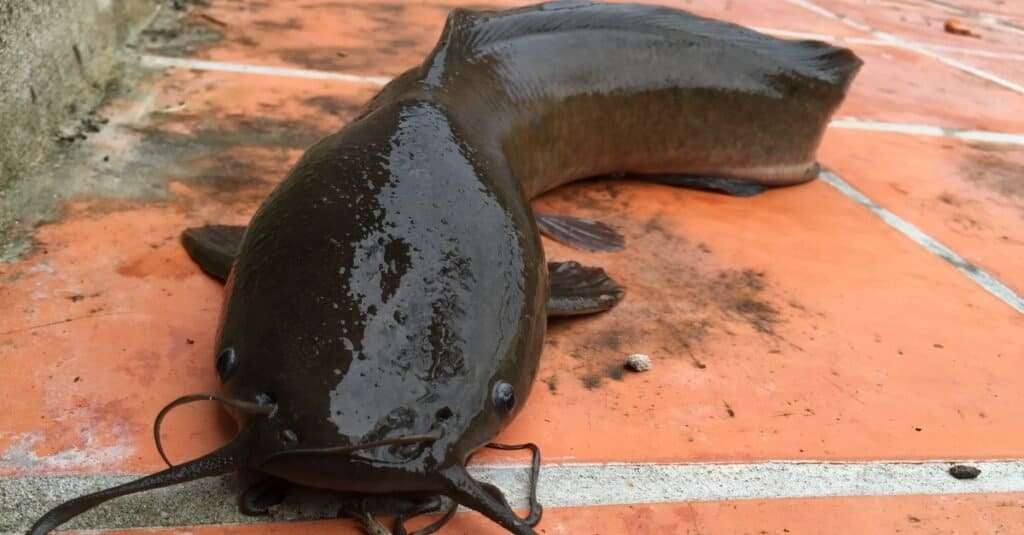
Size
This species’ adult individuals can reach lengths of up to 61 centimeters (24 inches).
Physical Characteristics and Behavior
Typically grey or gray-brown in hue, walking catfish have several tiny white spots running laterally along their bodies. The body narrows toward the tail in a manner resembling the shape of a tadpole as it goes from the front to the back, and the head is huge and flat. The mouth is wide, but there is limited room between the teeth.
Keeping and Care in Captivity

- Water Conditions
This fish favours warm, stagnant water with little oxygen, like that found in swamps, flooded plains, canals, ditches, and muddy ponds. They must Water requirements: Temperature: 68–78°F (20–26°C); pH: 5.5-8.0; hardness: 2–25°H.
- Tank Size
Due to their large size, 100 gallons is the smallest suggested tank size (380 liters).
- Tank mates
Even though walking catfish make ideal communal fish, little fish shouldn’t be kept with them as they can easily be swallowed whole. The best place to keep them in your house is a sizable tank. They get along well with big, sluggish fish like goldfish and koi. They can be kept with cichlids, loaches, tetras, tiny catfish, and other species. A wandering catfish may quickly devour your small guppies if you place them alongside them, so take cautious.
- Tank Setup
An extremely distinctive tropical freshwater fish called the walking catfish, also called the claria fish, spends the majority of its life on land. Because these fish typically spend a lot of time in caves or beneath big rocks, it’s crucial that your tank has a variety of hiding spots with sufficient cave-like qualities.
Because they offer them safety, comfort, and seclusion, caves are significant. Pay special attention to whether you choose artificial or live plants for your tank’s decorations; live plants should be avoided because they can carry parasites that are harmful to your fish’s health.
- What do they consume?
They should be fed a variety of meaty foods because they are omnivores. They will eat brine shrimp, shrimp, cyclops, bloodworms, freeze-dried krill, and other minute invertebrates like worms and bug larvae. Additionally, high-quality flake food is a fantastic supplement to their diet. Never give them any form of plant or algae.
Table





